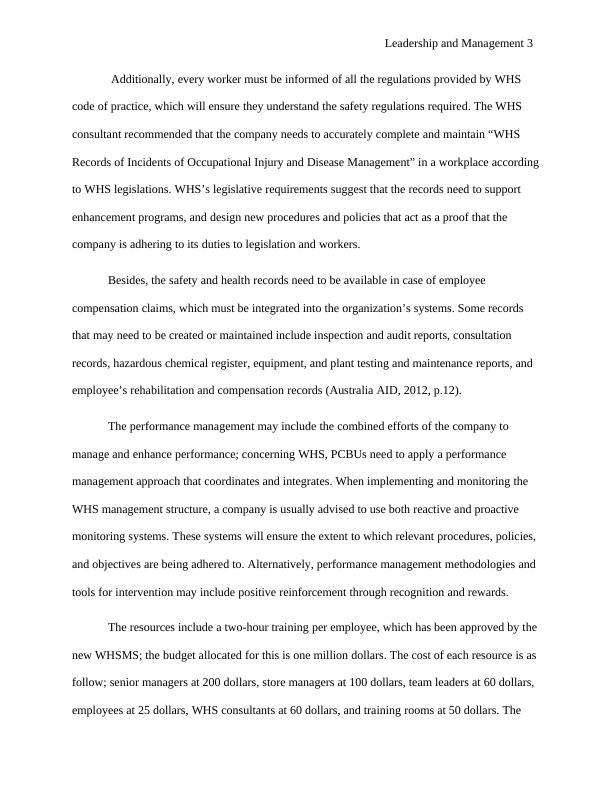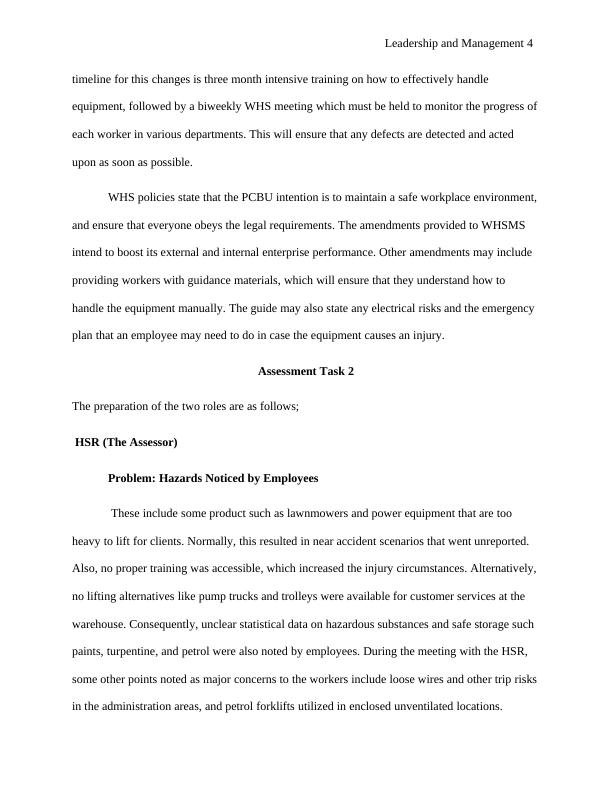Safety Management Structures and Procedures for WHS Compliance
Demonstrate skills and knowledge required to establish and maintain effective and compliant participation arrangements for managing WHS, as well as procedures for identifying hazards and assessing and controlling risks.
12 Pages2789 Words291 Views
Added on 2022-11-13
About This Document
This document discusses the safety management structures and procedures for WHS compliance. It covers hazard management, risk evaluation, training, and record-keeping policies. The document also includes an implementation plan for controlling and monitoring identified risks. The assessment tasks cover the roles of HSR and store manager, and a training and safety orientation sitting.
Safety Management Structures and Procedures for WHS Compliance
Demonstrate skills and knowledge required to establish and maintain effective and compliant participation arrangements for managing WHS, as well as procedures for identifying hazards and assessing and controlling risks.
Added on 2022-11-13
ShareRelated Documents
End of preview
Want to access all the pages? Upload your documents or become a member.
Work Health and Safety Practices: Assessment 1 and 2
|27
|3912
|216
Work Health and Safety Management System of Organisation - SBA 415
|7
|2255
|16
BSBPMG410 Implementing and Monitoring WHS Policies
|33
|8620
|120
RCM 301 || Risk Crisis And Disaster Management
|14
|3155
|31
Health And Safety Management System in Organisation
|10
|2791
|54
Roles and Responsibilities of Construction Project Stakeholders
|17
|2615
|468




